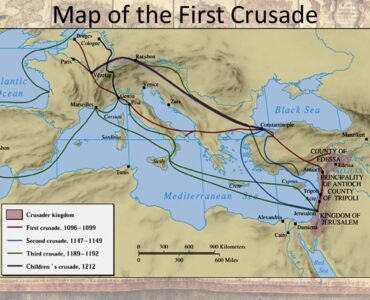
Ithnā ʿAsharīyah
The followers of the twelve imams regarded as the rightful successors of the Prophet, the Ithnā ʿAsharīyah, or Twelvers, constitute the major subdivision within Shīʿī Islam. The Ithnā ʿAsharīyah are also known as Imāmīyah because of their main tenet regarding the necessity of the imam force the establishments of the ideal Muslim community under divine revelation. The term Shi’a is generally applied to the Twelvers, despite the fact that there are other factions, such as the Ismāʿīlīyah and Zaydīyah, that are also included within Shīʿī Islam.
Historical Development
The Ithnā ʿAsharīyah/Twelvers trace their history to the investiture, in Ghadīr Khumm (modern-day Juḥfah), of ʿAlī ibn Abī Ṭālib, the first imam, with wilāyah (discretionary authority) by Muḥammad after the Prophet ’s Farewell Pilgrimage. Following Muḥammad ’s death in 632, the leadership of the nascent community was assumed by the Prophet ’s leading companion, Abū Bakr, but a group of Muslims refused to accept him as caliph. This group constituted the nucleus of the early Shīʿa (“partisans”). They believed that ʿAlī was Muḥammad ’s rightful successor and that those who usurped his right were sinners. This belief marked the genesis of the Shīʿī concept of imamate. Although ʿAlī did not assume political authority until after the third caliph, ʿUthmān, was murdered in 656, he was regarded by the Shīʿī as the imam, that is, a person qualified to assume temporal and spiritual authority. Following ʿAlī ’s murder in 660, the imamate continued with Ḥasan (d. 669) and Ḥusayn (d. 680), the sons of ʿAlī and his wife Fāṭimah, Muḥammad ’s daughter.
The second most significant event during the formative period of the Ithnā ʿAsharīyah was the murder of the third imam, Ḥusayn, on the plains Karbala, Iraq, in 680. The Karbala episode provided the Shīʿa with the ethos that led to the distinct Shīʿī belief system, which is constructed around the notion of divinely designated ideal leadership, and the pathos that set the tone of the Ithnā ʿAsharī religious praxis for posterity. From the Ithnā ʿAsharī perspective, Karbala became the paradigm for defiance against the unjust authority that culminated in martyrdom (shahādah in the sense of sacrificial death in the path of Allah). It also marked a shift in the subsequent role of the Shīʿī imam from politically activist upholder of just authority to politically quietist successor of Ḥusayn. The imamate was identified more in terms of the imam ’s religious-legal knowledge of Islamic revelation than his activist posture as the redresser of the wrongs committed against the ahl al-bayt (the Prophet ’s family).
ʿAlī Zayn al-ʿĀbidīn (d. 714), Muḥammad al-Bāqir (d. 733), and Jaʿfar al-Ṣādiq (d. 765), the fourth, fifth, and sixth imams, inaugurated the era of devotional, theological, and juridical formulations of the Ithnā ʿAsharīyah. Whereas for the Muslim community in general the second half of the eighth century was a period of political and social unrest, for the Shi’a it was the critical phase of self-definition in the face of competing and politically supported religious expression. The replacement of the Umayyads by the ʿAbbāsids in 748 and the political turmoil that ruled in the central lands of the caliphate afforded these imams necessary time to shape the future direction of the Ithnā ʿAsharīyah. Through the spiritual and intellectual leadership of al-Bāqir and al-Ṣādiq, the Shīʿī developed distinctly Shīʿī Qurʿānic exegesis, through well-documented Prophetic ḥadīths (reports), including ones related by the imams, and a highly sophisticated juridical tradition, which subsequently earned them a distinct recognition in the larger community as the followers of the Jaʿfarī madhhab (rite).
The succeeding imamate of al-Ṣādiq ’s descendants, from Mūsā al-Kāzhim (d. 799), the seventh imam, to Muḥammad al-Mahdī (disappeared in 874 to return as the Mahdi, “divinely guided” leader of the ummah [community], at the End of Time), the twelfth and last imam, was the most difficult period for the Ithnā ʿAsharīyah. The imams lived either incarcerated or under surveillance for suspected activities against the caliphate. The Shi’a were faced with unrelenting ʿAbbāsid atrocities and had little or no access to their imams. Under those conditions, the imams appointed their nuwwāb (personal deputies), who conveyed their teachings and collected religious dues, such as the khums (originally a fifth of the spoils of war) and zakāt (alms), from their followers. This deputyship gradually evolved into the influential religious institution among the Shi’a that culminated in the wilāyah (comprehensive guardianship) of the qualified mujtāhid (or faqīh; jurist-theologian) under the Qājār and post-Qājār jurists.
During al-Kāzhim ’s imamate, the concept of an imam in ghaybah (occultation), who continued to direct his community ’s affairs through his trusted associates, found theological and legal expression in the ḥadīths attributed to the imams al-Bāqir and al-Ṣādiq. The requirement of taqīyah (prudential concealment of one ’s true belief) as a strategy of survival in the midst of the hostile majoritarian Sunnīs also became more pronounced among the Shi’a at this time.
The occultation of the twelfth imam is divided into two forms: the Short (or Lesser) Occultation and the Complete (or Greater) Occultation. During the Short Occultation (874–941), the last imam appointed some of his prominent followers as his “special deputies” to carry on the function of the imamate in religious and social affairs. During the Complete Occultation (941–), the learned jurists among the Shi’a were believed to have been appointed by the twelfth imam as his “general deputies” to guide believers pending his return.
The period of the general deputies has been dominated by two concerns: first, stabilization of the theological imamate of the twelve imams; and second, consolidation of the juridical and functional imamate of the leading Shīʿī scholars who, being de facto leaders of the Shi’a, were solely responsible for directing their social and religious life. Whereas the former concern provided the Twelver community with its distinctive creedal identity based on the doctrine of divine justice and infallible leadership of the imams, the latter was instrumental in providing authoritative religious praxis and hierarchical intellectual and spiritual organization to ensure the continuity of the minority community spirit living at times under hostile Sunnī power.
The establishment of the Būyid dynasty (932–1055) and its patronage of Shi’ism, despite its support for the continuation of the Sunnī caliphate as symbolic of the unity of the majority of the Muslims, created favorable political and social conditions for the Shi’a. It was intellectually the most productive period of the Ithnā ʿAsharīyah. Prominent scholars representing the rationalist trend of the Baghdad theologians wrote major works vindicating the imamate of the Hidden Imam. Baghdad was also the point of convergence for the two important centers of Shīʿī ḥadīth, Kufa, and Qom. Qom remained an important center for other cities of Shīʿī learning in Khurasan.
Al-Kulaynī (d. 941) and Ibn Bābūyah (d. 991), the renowned Imamite traditionists, produced multivolume ḥadīth works that included everything that was needed in formulating the Imamite creed and praxis. Some of the most detailed and systematic treatment of Imamite jurisprudence was undertaken by Shaykh al-Mufīd (d. 1023) and his prominent disciples, such as al-Sharīf al-Murtaḍā (d. 1045) and Shaykh al-Ṭā ’ifah al-Ṭūsī (d. 1067). Unlike Shīʿī theology, which never conceded extending the imamate to other than the infallible successors of the Prophet, Shīʿī jurisprudence essentially reflected the conclusion of Sunnī jurists regarding the rationalization of existing political authority, which was deemed indispensable for safeguarding and widening the application of normative sharīʿah.
In view of the prolonged occultation of the imam, jurists developed a profile of a just Shīʿī authority other than the infallible imam that would manage community affairs. A number of Shīʿī dynasties followed the Būyids, although the first Shīʿī state in Iran was not established until the sixteenth century under the Ṣafavids. Shīʿī jurists had no difficulty in validating the temporal authority of the Ṣafavids. As experts in sharīʿah, they justified their own authority as the legally sanctioned walī(guardians) of the community, thereby making themselves responsible for carrying out the obligation of enjoining the good and forbidding the evil. The full implications of such investiture became plain with the establishment of the Qājār dynasty in the late eighteenth century. The role of the Shīʿīreligious leadership received fuller elaboration during the nineteenth and early twentieth centuries, until it reached its logical conclusion under Ayatollah Ruhollah Khomeini (1902–1989) in 1980 in the constitutionalization of the wilāyat al-faqīh (guardianship of the jurist) in the modern nation-state of Iran.
With its rational theology founded on the notion of divine justice and the ideal civil-moral authority of the imam, Shi’ism during the Ṣafavid and Qājār periods provided the impetus for a renewed interest in Neoplatonist philosophy, more specifically, the Illuminationist theosophy of Suhrawardī. Among the prominent figures whose elaboration of the Avicennian philosophy led them to formulate their own metaphysics were Mīr Dāmād (d. 1631) and Mullā Ṣadrā (Ṣadr al-Dīn Shīrāzi, d. 1640). In jurisprudence, the old tension between the uncritical upholders of the authority of traditions, known as the Akhbārī, and the supporters of rationalist methodology, the Uṣūlī, flared up during the later part of the Ṣafavid period and into the Qājār era. The controversy resulted in the resounding victory of the Uṣūlī jurists under the leadership of Vaḥīd Bihbahānī (d. 1793) and his disciples. The notion of centralized leadership of the most qualified mujtahid, the marjaʿ al-taqlīd, whose authority was institutionalized by the Uṣūlī deduction regarding the necessity of formally pledging obedience to a taqlīd (expert) in matters of sharīʿa, was also legalized during this period.
The Qājār and post-Qājār eras coincided with the introduction of modernization, including a modern system of administration, education, and modern values. Although introduced gradually and haphazardly, modernization of traditional Shīʿī society created tensions in the community and undermined the effectiveness of traditional religious leadership. The Shi’a exerted enormous pressure on their marjaʿ al-taqlīd to resolve the tensions caused by the changed expectations of modern living. Not many mujtahids were willing to undertake methodological revision and rethinking in order to provide legal-religious justifications for making Islam a relevant system for modern times. Nor did many regard it permissible for a mujtahid to assume political authority to implement sharīʿah norms in a modern society. However, Ayatollahs Khomeini and Muḥammad Bāqir al-Ṣadr (d. 1980) of Iraq regarded it appropriate for a qualified mujtahid to assume political power in his role as the executor of the affairs of the Shi’a in a modern nation-state. Khomeini offered his own nuanced interpretation of Shīʿī religious leadership in both theory and practice.
Religious Beliefs And Practices
Unlike the Sunnī Five Pillars of Islam, which include both the shahādah (fundamental belief) and religious practice, Twelver Shi’ism adheres to the uṣūl al-dīn (principles of religion) and furūʿ al-dīn (derivatives of religion). The uṣūl expounds the five tenets of the Shīʿī belief system:
1. Tawḥīd (affirmation of the unity of Allah);
2. ʿAdl (justice of Allah);
3. Nubūwah (necessity of prophecy);
4. Imāmah (necessity of imamate); and,
5. Maʿād (Day of Judgment).
In the principles of tawḥīd, nubūwah, and maʿād, identified as uṣūl al-islām (essential for being a Muslim), the Shīʿīs in general share a common ground with the Sunnīs, although there are differences on points of details. The principles of ʿadl and imāmah are peculiarly Shīʿī in that they are regarded as uṣūl al-īmān (essential to the faith). Shīʿī belief in Allah ’s justice is similar to that of the Muʿtazilah, who taught that Allah is infinitely removed from every evil act and from being remiss in doing what is good for humanity. Divine justice also means that Allah provides humanity with the knowledge of good and evil and creates reason to guide a person to such knowledge. However, there is no guarantee that reason would always seek out the most beneficial way to perfection. Hence, Allah sends revealed messages through prophets as a complementary source to reason to remind humanity of its fitrah (innate disposition) inclined toward perfection. The principle of imāmah is regarded as part of the divinely appointed office of the prophecy to continue the Prophet ’s mission of establishing the ideal community on earth.
The imamate, like the prophecy, is protected from sin and is regarded as a divinely designated office. Through the imamate, survival of religion is guaranteed, hence the Shīʿī belief that “the earth cannot be set aright except by the Imam.” This means that there is an imam in every age, either manifest or concealed, who has the knowledge of the lawful and unlawful in Islam and who calls people to the way of Allah. There are times when the community can be without a manifest imam; this happens when Allah is enraged at the people for endangering the imam ’s life. Thus, the twelfth imam went into occultation in 874 and will continue to live in this state for as long as Allah deems necessary; eventually, Allah will command him to reappear and take control of the world in order to restore justice and equity. During the occultation, the imam has deputies, in the person of the marjaʿ al-taqlīd, who can act on Allah ’s behalf and guide the Shīʿīs in their religious and social matters.
As for furūʿ, in addition to the four pillars recognized by Sunnī Islam (ṣalāt [ritual worship], fasting of Ramadan, zakāt, and the ḥajj), the Shi’a add a number of juridically sanctioned acts. Shīʿīs are required to pay the khums on all gainful acquisition (wages, inheritance, treasure, wealth acquired through diving, and so on) after deducting all expenses connected with support of one ’s family, including education, marriage, assistance to the underprivileged, and so forth. Khums donations are divided into two equal portions: one portion is distributed among the needy, the orphaned, and wayfarers among the Prophet ’s descendants (the Hashemites); and another portion belongs to the imam, who uses it for all benevolent purposes in the community. During the absence of the twelfth imam, his share is administered by the mujtahid. This share has become the single most important source of financial independence of the Shīʿī religious class, which has used these donations to expand its influence over the community by supporting the establishment of religious institutions, including mosques and schools, and by providing religious personnel to represent its views and opinions in the community. Indirectly, such independence has increased the prestige of the religious class trustworthy protectors of the Shi’a against perceived oppression and tyranny of government officials.
Jihād, “enjoining the good and forbidding the evil,” “befriending (tawallā) those who befriend the Prophet and his descendants,” and “disassociating (tabarra ’a) from those who hate them” are also listed in the Shīʿī furūʿ alongside the other pillars. However, in the absence of the twelfth imam, only a defensive form of jihād is permitted in Shīʿī law, and “enjoining” and “forbidding” by use of force is limited to the legitimate Shīʿī authority, including the deputized jurist.
The obligation of tawallā (befriending) has led to two important religious practices unique to the Shīʿīs: first, the ziyārah (visitations) to the mashhad (mausoleums) of the imams and their descendants; and second, majālis (devotional gatherings) to mourn the martyrdom of Imam Ḥusayn on ʿĀshūrāʿ, the tenth day of Muḥarram, in Karbala. Both these practices have provided the Shīʿī minority with a renewed sense of loyalty to the Prophet ’s family. The shrine cities of Karbala, Najaf, Mashhad, and Qom have functioned as the religious centers for the ordinary Shīʿīs and learning centers for their mujtahids, who continue to teach in the holy sanctuaries. The Muḥarram commemoration has fostered among the Shi’a an identity consonant with their vision of history in which Allah’s people suffer at the hands of the oppressors until Allah commands the Mahdi to restore justice and equity on earth. The Iranian Revolution of 1979 not only utilized the religious symbols of Karbala to overthrow the shah ’s regime; it also used its most powerful message — challenging the tyranny of the time – by mobilizing support of the Shīʿī populace in the first ten days of Muḥarram (December 1978)Similar demands for the end of tyranny were heard in the neighboring Persian Gulf states, including Bahrain and Saudi Arabia, with large Shīʿī minorities, during the Muḥarram of 1978 and 1979. Thus, Muḥarram devotional gatherings held in special buildings for that purpose and known as ḥusaynīyah have served as important indicators of political and social awareness among Shi’a. The ḥusaynīyah have also provided influential Shīʿī preachers with a platform to educate masses in religious observances and to prepare them to pledge their loyalty to the marjaʿ, whose stance on religious and political matters they represent among the Shīʿīs. 651 – 000 http://discerningislam.com
Ithaca Ashariyah



